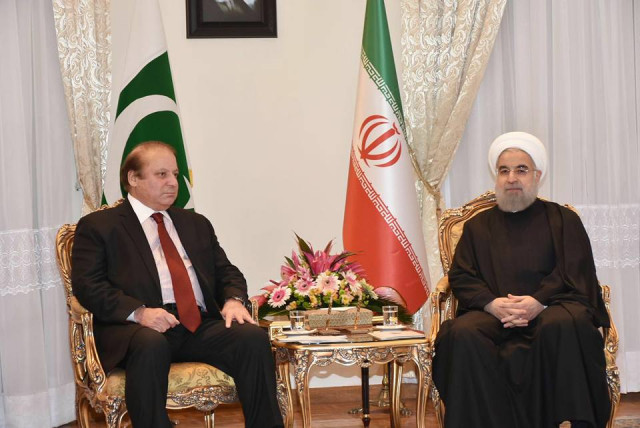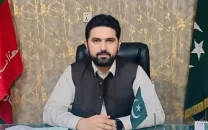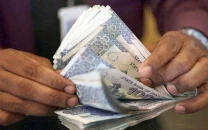Nawaz in Iran with sweet and sour memories
Less known for shuttle diplomacy, the premier has committed himself to easing out tension between two historic rivals

Prime Minister Nawaz Sharif meets Iranian President Hassan Rouhani in Tehran on January19, 2016. PHOTO: PID
With Washington, London and Brussels keeping themselves out, Pakistan’s efforts are at best daring but must be seen in the context of bilateral relations. For Pakistan, there exist two Irans; one which it has dealt with since independence and the other which shaped up after the 1979 blood-soaked revolution.
Iran was amongst the first nations alongside Turkey and Saudi Arabia to acknowledge Pakistan as a sovereign state. Liaquat Ali Khan paid his first foreign visit to Tehran in May 1949. Bordering the Soviet Union and weary of its expansionism, Iran valued Pakistan as a strategic ally.
PM, army chief arrive in Tehran after Saudi visit
From strategic allies to estranged neighbours
When political sands started to shift in Iran, Pakistan was under military rule of General Ziaul Haq. The uprising in Persian cities was disturbing for Islamabad, as it feared losing a trusted ally.
In 1978, Jamaat-e-Islami (JI) had come closer to Ayatollah Khomeini’s core group. With the permission of President Zia, federal minister and JI’s ideologue Khurshid Ahmad met the popular Iranian cleric in Paris on January 14, 1979.
After overthrowing Reza Shah, Khomeini was furious at the US and Iran’s pro-Shah neighbours. Iran’s new leader cursed the nuclear ambitions of Shah and banked on proxies for regional ambitions of triggering similar revolutions.
Pakistan wasn’t ready for a hostile eastern neighbour. The JI leadership could not win a breakthrough in Tehran for Islamabad was still a US ally and frontline opposition to Soviet troops in Afghanistan alongside Saudi Arabia. Evidently, Pakistan became proxy ground for sectarian reactionism.
Pakistan urges Riyadh, Tehran to re-engage
India used its influential Shia figures, with Persian ancestry, to make rare inroads in Iran. President Rafsanjani’s three-day visit to India in 1995 revealed a shared vision for the future. Come January 2003, Iran’s president Khatami graced Republic Day parade in New Delhi as the two countries had signed a top-secret security pact.
More or less, bilateral relations were marred by varying degrees of mistrust as Iran continued soft influence policy through its likeminded elements in the country. Pakistan was supporting Taliban, meanwhile. The cosiest period of Pakistan-Iran ties was during 2008 to 2013 when the Asif Ali Zardari-led government nearly abandoned Riyadh and other Arab allies to appease Tehran.
Unlike Shah’s times, policy makers now largely see Iran as an undependable neighbour, which has done little to address concerns about its strategic pacts with India. Foreign press reported that a pact provides Delhi air and naval bases in Iran and vice versa. India’s development of Chabahar port continues to be a constant irritant.
Today’s Iran does not enjoy good relations with Turkey, thus the European economic corridor has become a memory of the past. The dilapidated condition of Quetta-Sistan road underscores marginal bilateral relevance.
Mediatory mission: PM, army chief to visit S Arabia, Iran
Fruits of public diplomacy
Contrary to state-level ties, Iran enjoys a positive image among citizens, mainly due to its anti-US and anti-Israel posturing. The fallout of arrogant US policies and rapid appeasement of India at the cost of Pakistan has led to an improved image of the defiant regime in the public sphere.
Unlike Pakistan’s Arab allies, Iran invests heavily on wider outreach and public diplomacy in its countries of interest. Despite odds posed by radical Sunni groups, Tehran has not only been able to maintain excellent relations with the Shia population of Pakistan but has also made inroads in civil society and Pakistan’s political arena.
During Shah’s time and even after the revolution, Iran never abandoned banking on Urdu’s Persian heritage. The literary connection has always served to strengthen Iran’s linkage to the Urdu speakers. Moreover, conferences on Ghalib and Iqbal’s Persian poetry have been a source of networking among intellectuals.
Prime Minister Nawaz Sharif’s visit to Iran today will test diplomatic posturing of post-sanction Iran. Also, Tehran can use the opportunity to open a new chapter of ties with Islamabad.
Naveed Ahmad is a Pakistani investigative journalist and academic with extensive reporting experience in the Middle East and North Africa. He is based in Doha and Istanbul. He tweets @naveed360





1734118407-0/New-Project-(1)1734118407-0-208x130.webp)













COMMENTS
Comments are moderated and generally will be posted if they are on-topic and not abusive.
For more information, please see our Comments FAQ